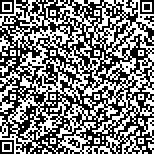| 摘要: |
| 于1991年3 - 9月和1992年3 - 9月,在中国沿海广东、海南、福建、浙江、江苏、山东、河北、天津和辽宁等9个省市的养殖场采集中国对虾、斑节对虾和长毛对虾3种对虾标本,运用显微和亚显微观察方法,对养殖对虾的微型生物污着症进行研究。结果表明,患该症的对虾其体表污着生物群落通常由微型生物组成,包括各种细菌、藻类和原生动物,主要类群是具柄的缘毛美纤毛虫;其他观察到的常见类群包括丝状和非丝状的细菌、附着性藻类和吸管虫类;在养成期偶尔发现有营薛虫和藤壶等大型污着生物。对育苗期和养成期中国对虾体表的扫描电镜观察发现:在某些对虾体表,污着群落具有明显的分层现象。对虾体表的不同污着程度与其体表污着群落的不同发育阶段有关。据此,认为对虾体表微型生物污着症可能是一种慢性的疾病综合症。 |
| 关键词: 养殖对虾 微型生物污着症 微型污着群落 扫描电镜 |
| DOI: |
| 分类号: |
| 基金项目:国家博士后科研基金;广东省自然科学基金!90310 |
附件 |
|
| CHARACTERISTICS OF THE MICROBIAL FOULING DISEASE SYNDROME OF THREE CULTURED PENAEID SHRIMPS |
|
Hu Chaoqun1, Liu Ruiyu1, Tan Zhiyuan2, Chen Duo2, Cao Denggong2
|
|
1.Institute of Oceanology, Academia Sinica, Qingdao 266071;2.South China Sea Institute of Oceanology, Academia Sinica, Guangzhou 510301
|
| Abstract: |
| This paper presents results of study on the microbial fouling disease syndrome of three species of cultured penaeid shrimps from nine provinces of China. In March to Sept. 1991 and March to Sept. 1992, Penaeid chinensis were sampled in Guangdong, Fujian, Zhejiang, Jiangsu, Shandong, Hebei, Tianjin and Liaoning; P. monadon were sampled in Hainan, Guangdong and Fujian, and P. penicillatus were sampled in Guangdong, Fujian and Jiangsu. The components of the fouling communities associated with this disease syndrome commonly consist of microfouling organisms including various bacteria, algae and protozoa. The major groups observed in these communities were the stalked peritrich ciliates. Other microfouling organisms observed are commonly filamentous and non-filamentous bacteria, attaching algae and the stalked suctorida. Macrofouling organisms such as bryozoa and barnacles were also occasionally observed in some communities. SEM observations on the fouling communities from the larval rearing stage and the growout stage of P. chinensis showed that the communities on the body surfaces of the heavy fouling shrimps were obviously stratified, indicating that the different developmental stages of the community were responsibale for the different grades of the fouling and that as a result, the microbial fouling of cultured penaeid shrimp may be a chronic disease syndrome. |
| Key words: Cultured penaeid shrimp, Microbial fouling disease syndrome, Microfouling community, Scanning electron microscopy |
